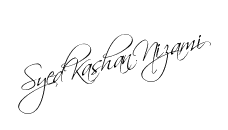The world of personal
computers is one of Apples, Lisa’s, Macintosh's, Compaq’s, Commodores, Eagles,
Data Generals, and half a hundred others. While they all function much the
same, not all are suitable for the needs of business, industry, or government.
For example, many computers found in homes may be fine for video games or for
handling a basic budget, but they often lack the capabilities and memory needed
to handle most business applications. In business and industry, the IBM
Personal Computer (IBM PC) has emerged as the primary machine for desktop
computing. The IBM PC, also known as the Model One, is that company’s first
entry into the personal computer market. The Model One, shown in Figure 23 with
a monochrome monitor, has two disk drives, which means that it offers no
internal long-term storage and is dependent on diskettes for its instructions
and for storing work. The disk drives are the two open slots on the front of
the microprocessor as pictured in Figure 23. The diskette containing the
software program is placed in the left-hand drive and the diskette on which the
work will be stored is put in the drive on the right. The system identifies the
disk drives as:
FIGURE 23.
Dual disk drive system. Courtesy of International Business Machines.
Drive A (the disk
drive on the left)
Drive B (the disk
drive on the right)
When the machine is
turned off, it loses everything that was stored on it
The IBM XT, pictured
in Figure 24 with a color monitor, has a hard disk installed, which makes
internal long—term storage possible. This machine has one disk drive unit and a
hard fixed disk. Diskettes containing the software or data to be worked on are
loaded through the disk drive and then copied to the hard disk, which generally
has a storage capacity of 10 megabytes.
The system identifies
each of these units as:
Drive A (the disk
drive on the left)
Drive C (the hard
fixed disk)
A fixed disk drive
makes it easier to switch from one program to another. It is also easier to
integrate information from various
FIGURE 24. IBM hard
disk system. Courtesy of International Business Machines.
Programs and files
into a single document. An example would be to merge sections from an
electronic spreadsheet program into a report being prepared under a word
processing program. Un- like the PC, the XT will retain anything stored on its
hard disk whenever the power is turned off. While each system can be equipped
with up to 640K of short- term memory (RAM), there are some differences in the
mother boards, which contain the main circuitry for a personal computer. The XT
has the ability to add or expand the system by five additional devices or
functions over what the PC can handle. Hard disks also operate faster than
diskette drives. This allows access to more information at greater speeds. Another
version of the PC is the AT, which can process information two or three times
faster than an XT and has a fixed disk storage capacity of 20 megabytes. Figure
25 is a 3270 personal computer.
Essentially, this is an XT that has been modified to also act as if it were a
terminal connected to a mainframe. While this capability can exist in any
personal computer in which an emulation board has been installed, a 3270 has
everything built right in.
FIGURE 25. IBM 3270
Personal Computer. Courtesy of International Business Machines.
The 3270 personal
computer also has a feature called windowing, which allows the display screen
to be divided into as many as seven separate work areas. An analogy would be
putting a report together from different piles of information. Instead of
stacking everything on a desk, the computer can display data from up to four
different sources simultaneously. There are also windows on which notes or
reminders can be written and displayed. Portable computers such as the Compaq
and Data General/One Laptop (see Figure 26) are also popular. These machines
are often equipped the same way a desktop system is, and can perform identical
functions and run the same software programs. Portable computers are totally
self-contained and come with built- in monitors, disk drives, and, on some
models, fixed disks (see Figure 27).
Before we finish :
If you need more help or have an opinion or suggestion Please leave a
comment Below. This is a Do-Follow Blog leaving a comment will also
help your blogs Google rank.







Looking for "Spyrix Software"? Spyrix Personal Monitor is a great program for remote monitoring software. It can keep track of what sites users visit, what files to download, print, may block sites specified themes and much more.
ReplyDeleteIf you want to know more, Please check out here: spyrix personal monitor
Adana
ReplyDeleteElazığ
Kayseri
Şırnak
Antep
5İ7A
Erzurum
ReplyDeleteElazığ
Konya
Zonguldak
Eskişehir
88ROX
maraş evden eve nakliyat
ReplyDeleteosmaniye evden eve nakliyat
adıyaman evden eve nakliyat
istanbul evden eve nakliyat
ordu evden eve nakliyat
QY0R
16711
ReplyDeletebinance indirim
822D3
ReplyDeleteBee Coin Hangi Borsada
Vector Coin Hangi Borsada
Bitcoin Nasıl Çıkarılır
Aion Coin Hangi Borsada
Xcn Coin Hangi Borsada
Paribu Borsası Güvenilir mi
Telegram Görüntüleme Hilesi
Caw Coin Hangi Borsada
Kwai Takipçi Satın Al
A9E19
ReplyDeleteMEME Coin Hangi Borsada
Parasız Görüntülü Sohbet
Periscope Takipçi Hilesi
Bitcoin Nasıl Oynanır
Coin Kazanma
Snapchat Takipçi Hilesi
Sohbet
Referans Kimliği Nedir
Ceek Coin Hangi Borsada
56069
ReplyDeleteledger wallet
phantom
yearn
eigenlayer
chainlist
dappradar
layerzero
uwu lend
satoshi
AC940
ReplyDeletethorchain
shapeshift
DefiLlama
uwulend finance
sushiswap
pancakeswap
satoshivm
quickswap
yearn finance
E4B06CC9D1
ReplyDeleteinstagram ucuz beğeni satın al